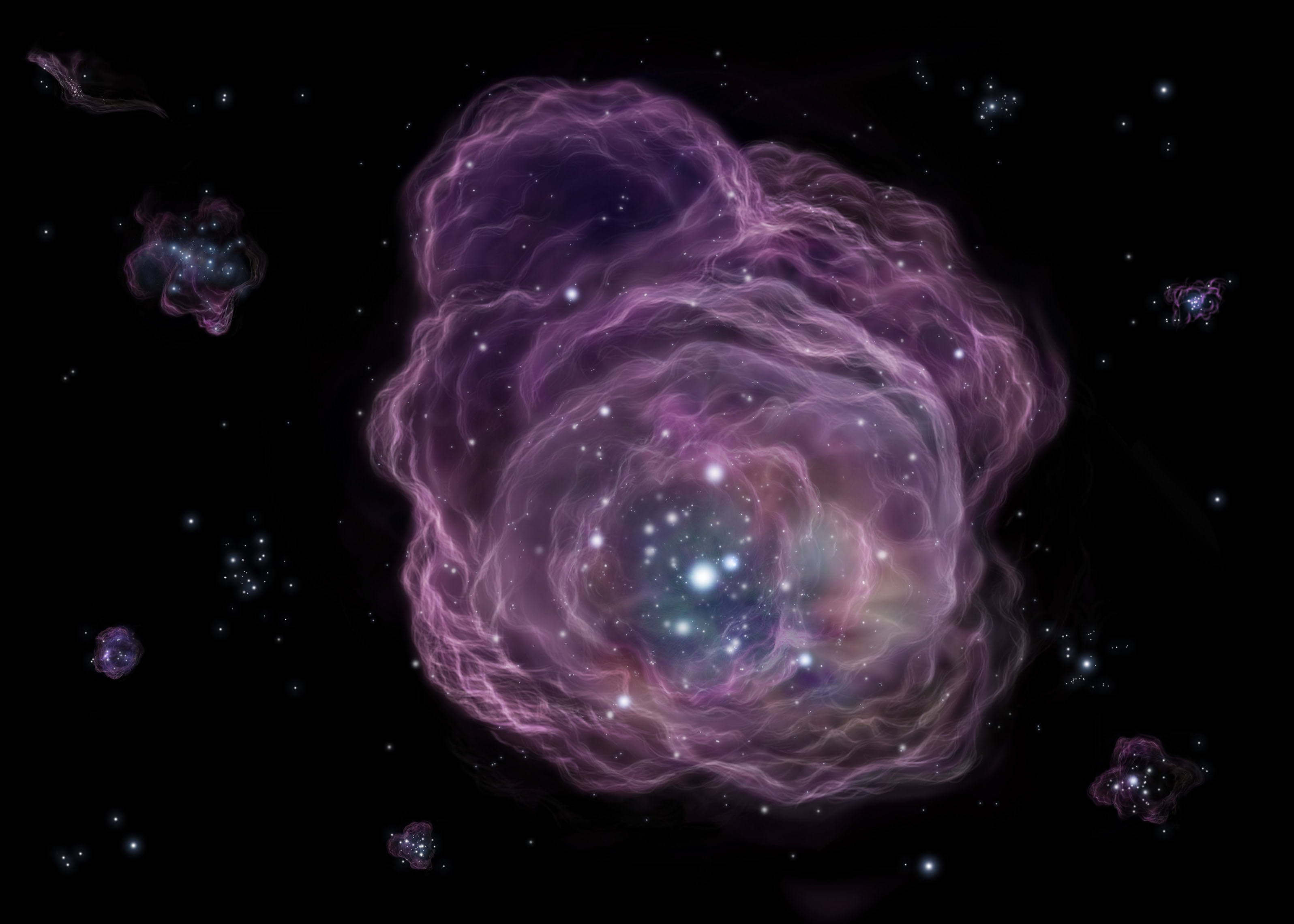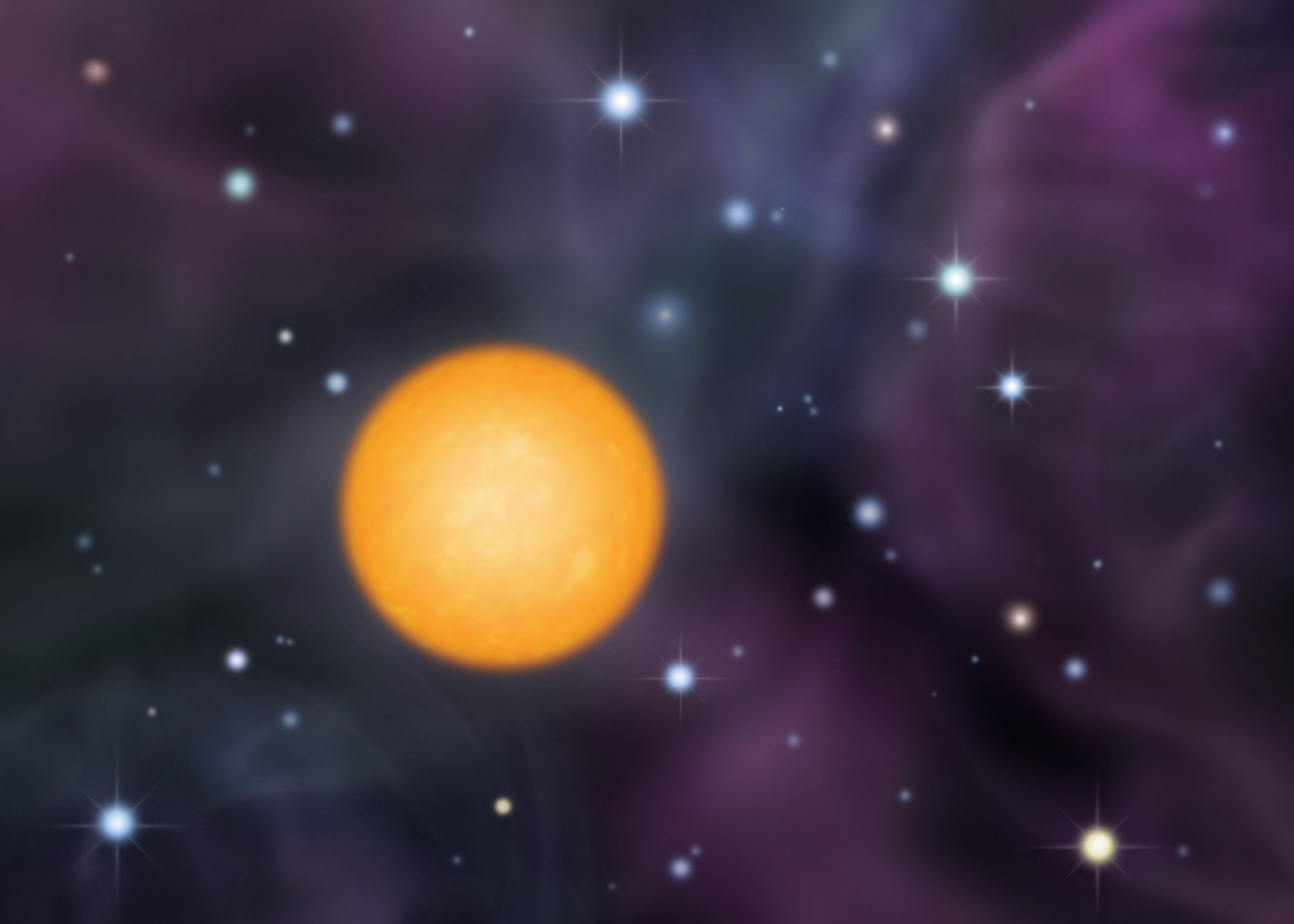Traces of One of Universe's First Stars Detected

An ancient star in the halo surrounding the Milky Way galaxy appears to contain traces of material released by the death of one of the universe's first stars, a new study reports.
The chemical signature of the ancient star suggests that it incorporated material blasted into space by a supernova explosion that marked the death of a huge star in the early universe — one that may have been 200 times more massive than the sun.
"The impact of very-massive stars and their explosions on subsequent star formation and galaxy formation should be significant," lead author Wako Aoki, of the National Astronomical Observatory of Japan, told Space.com by email. [Top 10 Star Mysteries]
Hidden giants
The first stars in the cosmos, known as Population III stars, formed from the hydrogen and helium that dominated the early universe. Through nuclear fusion, other elements were forged in their hearts. At the end of their lifetimes, supernovas scattered these elements into the space around them, where the material was folded into the next generation of stars.
The universe's first massive stars would have been short-lived, so to determine their composition, scientists must examine the makeup of their offspring — stars that formed from the material distributed by their explosive deaths. While numerical simulations have suggested that at least some of the first stars should have reached enormous proportions, no previous observational evidence had managed to confirm their existence.

Aoki and a team of scientists used the Subaru Telescope in Hawaii to perform follow-up observations of a large sample of low-mass stars with low quantities of what astronomers term "metals" — elements other than hydrogen and helium. They identified SDS J0018-0939, an ancient star only 1,000 light-years from Earth.
"The low abundance of heavy elements suggests that this star is quite old — as old as 13 billion years," Aoki said. (Scientists think the Big Bang that created the universe occurred approximately 13.8 billion years ago.) [5 Weird Facts About the Big Bang]
Get the Space.com Newsletter
Breaking space news, the latest updates on rocket launches, skywatching events and more!
The chemical composition of SDS J0018-0939 suggests it gobbled up the material blown off of a single massive ancient star, rather than several smaller bodies. If multiple supernovas had provided the material that constructed the star, the "peculiar abundance ratios" in its interior would have been erased, Aoki said.
Volker Bromm of the University of Texas, Austin agrees, saying that SDS J0018 likely evolved from the material from a single star, which could have been more than 200 times as massive as the sun.
Bromm, who has performed theoretical studies on the properties of the first generation of stars and their supernova explosions, did not participate in the new study. He authored a corresponding "News & Views" article that appeared with the research online today (Aug. 21) in the journal Science.
Signs of low-mass first-generation stars have appeared to be more plentiful in their descendants, which contain large amounts of carbon and other light elements, but until these results, scientists had detected no traces of their very massive siblings. The scarcity suggested that low-mass stars were more numerous in the early universe.
"We have come to understand that the first stars had a range of masses, from a few solar masses, all the way up to 100 solar masses, or even more," Bromm told Space.com via email. "The typical, or average, mass is predicted to be somewhere close to a few tens of solar masses.".

Searching for the first generation
Massive stars burn through their material far faster than their lower-mass relations. Therefore, no high-mass stars should exist today. But Aoki suggested that smaller ones could still be visible.
"In the Milky Way, low-mass Population III stars, which have sufficiently long lifetimes, can be found if they have formed at all," he said.
Such stars would be difficult to detect. According to Bromm, their radiation would have been shifted by the expanding universe into the near-infrared wavelength, which requires sensitive space-based detectors.
"This is one of the main targets for [NASA's] James Webb Space Telescope (JWST), planned for launch in 2018," Bromm said.
More massive stars, such as the one that preceded SDS J10018, would be short-lived, so scientists would have to search back to the early universe. Because distance and time are related — observing a star that is 13 billion years old requires looking out a distance of 13 billion light-years — the search would require a massive and extraordinarily sensitive telescope, such as the upcoming Thirty-Meter Telescope and the Giant Magellan Telescope.
In addition to detecting early stars, JWST should also be able to detect the supernovas that mark the end of their lifetimes, Bromm said.
Detecting the material left behind would be more difficult. Due to their low content of heavy metals, early supermassive stars experienced a different type of supernova than stars do today. Those huge stars that undergo the standard core collapse supernova explosion would leave behind enormous black holes that could have formed the seeds of the supermassive black holes that lie at the centers of galaxies. These black holes, along with the neutron stars that could have also formed, would be a challenge to detect.
Aoki expects to continue detailed studies of the evolution and explosion of extremely massive stars.
Follow us @Spacedotcom, Facebook or Google+. Originally published on Space.com.
Join our Space Forums to keep talking space on the latest missions, night sky and more! And if you have a news tip, correction or comment, let us know at: community@space.com.

Nola Taylor Tillman is a contributing writer for Space.com. She loves all things space and astronomy-related, and enjoys the opportunity to learn more. She has a Bachelor’s degree in English and Astrophysics from Agnes Scott college and served as an intern at Sky & Telescope magazine. In her free time, she homeschools her four children. Follow her on Twitter at @NolaTRedd









